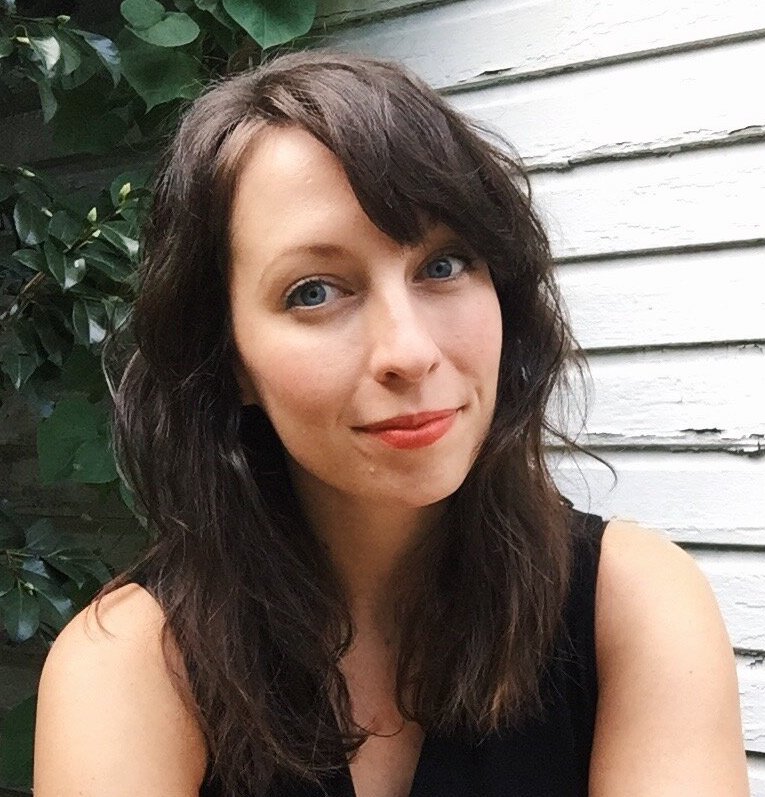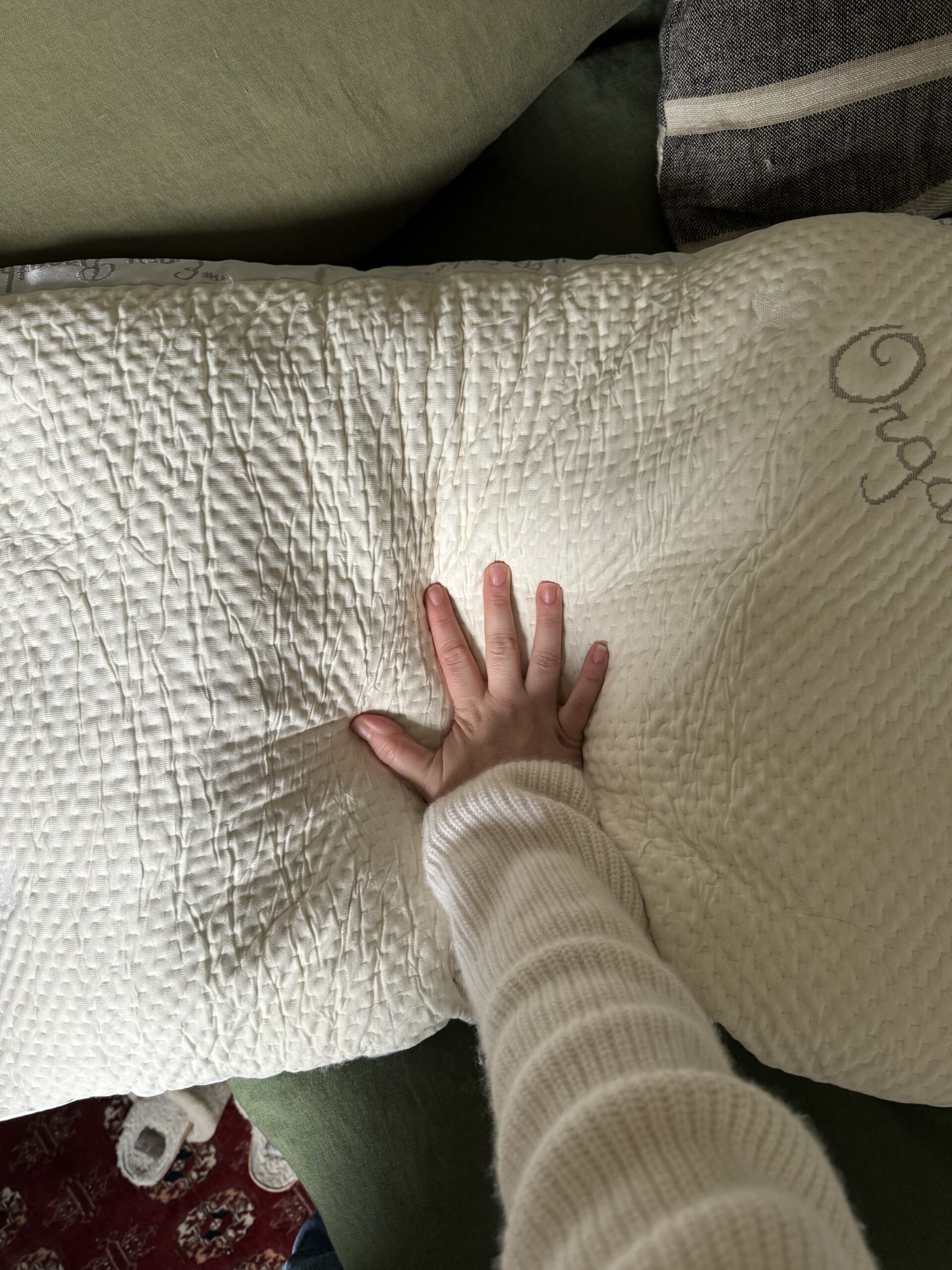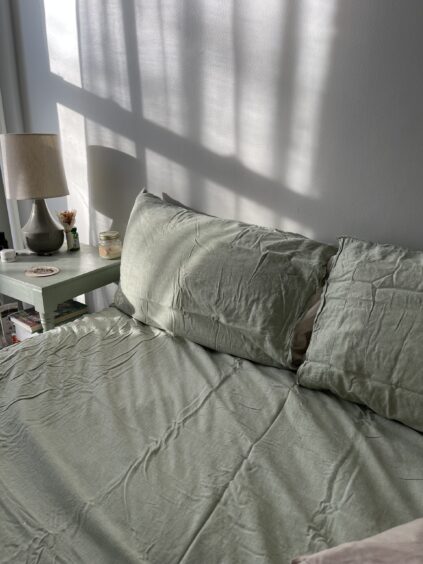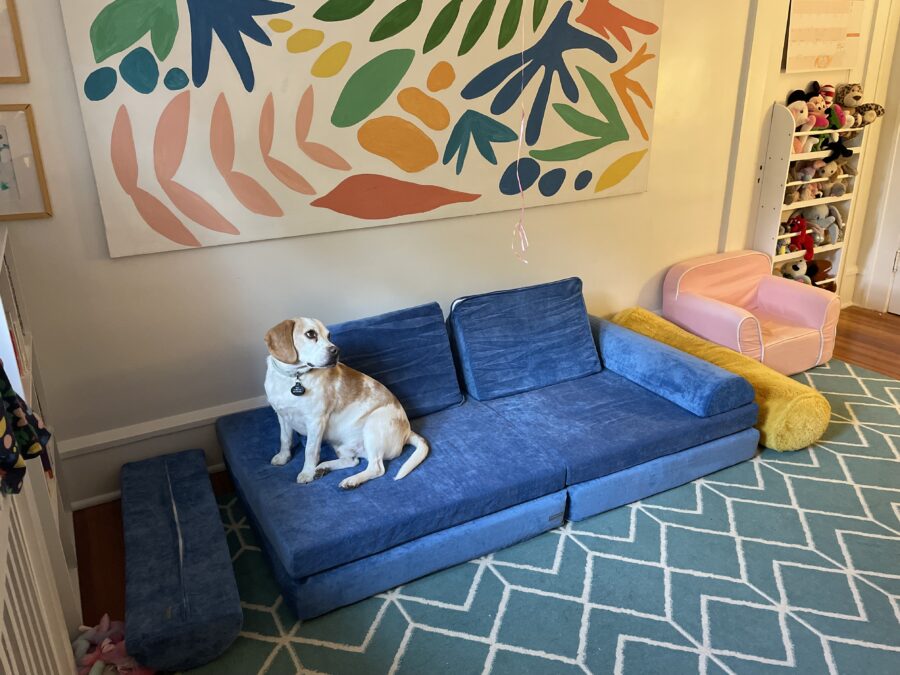
This Nugget Dupe Is The Best Sustainable Play Couch
The Good Trade editors endorse products we’ve personally researched, tested, and genuinely love. Learn more about our methodology and business model here.
During my nomadic 20s, I was always shuffling between states for school, internships, jobs, and travel. Every lease was no more than a year, making it difficult to ever want to invest in actual furniture. I instead honed my thrifting or local marketplace skills, hitting up yard sales and splitting the costs of common room items with roommates. As a writer and a heavy reader, moving meant dozens of boxes packed with books, so I generally shed the ragtag collection of tables and chairs and bookshelves in a last-minute moving sale. Even after I decided to stay in the city that would end up being my home, I would still have three moves to deal with before my husband and I bought our house, promising each other to never move again as long as we could help it.
“When I became pregnant and was suddenly presented with endless lists of “must have” nursery items, I was skeptical.”
These years spent living with mismatched home items helped me get fairly good at transforming trash into treasure. Sprucing up a second- or third-hand IKEA wardrobe with some paint and new hardware gave me a sense of pride that made it extremely difficult to ever want to drop several hundred dollars on a brand new version of the same item. Couple this with the fact that I have always lived in, let’s call them “cozy” sized places, where we needed to think creatively about how we used each space. And I believe I’ve mentioned my books? Well, I married a fellow writer, so we came into our cutie lil house with some stuff.
All this to say: when I became pregnant and was suddenly presented with endless lists of “must have” nursery items, I was *skeptical.* Babies and children grow at alarmingly rapid rates, blasting through clothing sizes and developmentally appropriate items at teeth-chattering speeds. I thrifted and borrowed and hunted our Buy Nothing groups as much as possible, but I largely opted out of any item that seemed too large, too expensive, or too single-use. And the multiple-cushioned play couch things I saw centered in the epic playrooms of every cute influencer on the internet? That seemed to be exactly the sort of thing I’d avoid. “I’ll just sign her up for gymnastics,” I thought. “Ain’t nothing wrong with a good old fashioned couch fort, anyway.”
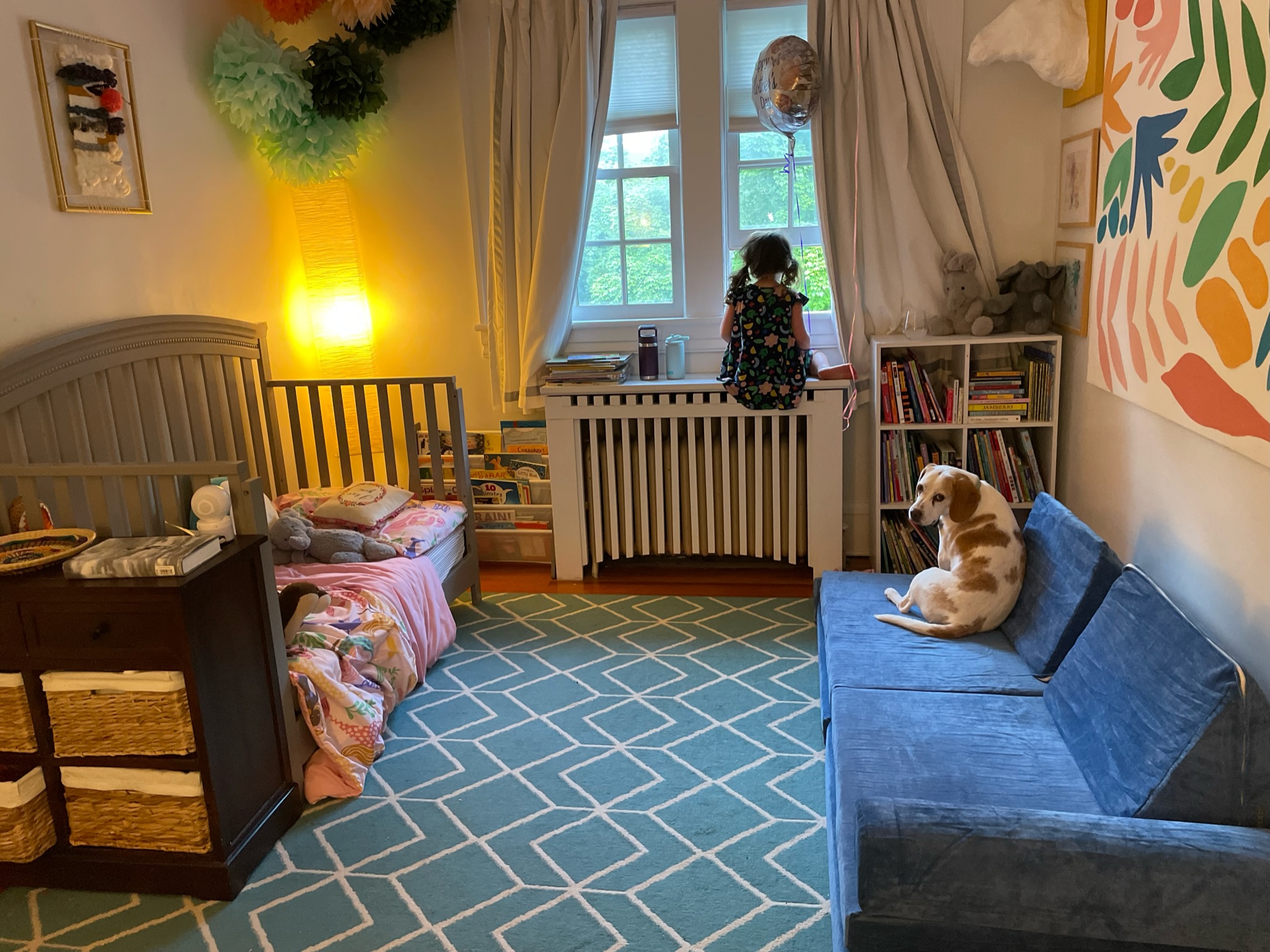
And then my daughter became a toddler. This kid needs to move. And she will find a way, under every circumstance, to jump, climb, tumble, scale, and roll over every surface available to her. It reminds me of the way raccoons will dip their food in water, just so they can understand the properties of the thing before they eat it. Toddlers must not just touch, but apply themselves bodily and enthusiastically to a thing in order to understand it, which can be extremely hard on your furniture. “Okay,” I thought at first. “That’s fine. I’m a cool mom. We can just put the couch back together at the end of the day.”
[Spoiler: We did not put the couch back together at the end of each day, and also the jury is still out on my coolness.]The Brentwood Home Play Couch seemed like an ideal solution to the tornado that had thoroughly reshaped our couch by sheer brute force. The biggest concern I had about it was its size (flat, the base cushion is 66″ x 33″ x 5″). “Where are we planning on putting this, exactly?” my husband asked, echoing my own concerns. I considered the living room, somehow arranging it as like a kid’s seating area mirroring our couch. We ultimately rearranged some shelves in our daughter’s room, though, setting it up parallel to her bed.
“Toddlers must not just touch, but apply themselves bodily and enthusiastically to a thing in order to understand it.”
The couch comes compressed in a large recycled cardboard box. Rolled up and vacuum-sealed, there was a fair amount of material, including plastic wrap. (I forgot to take a photo because it arrived a few hours before our daughter was due home from her grandparents’ and we were rushing to set everything up to surprise her.) There are six pieces: a large folding rectangle base, a thinner folding rectangle cushion topper, two large triangles, and two half cylinders that we use as armrests. It is made from a blend of CertiPUR-US® certified foam with up to 20% BioFoam®, a patented biological foam made in the USA from vegetable materials, such as corn, sunflower seeds, castor oil beans, and soybeans.
It didn’t take long at all to resume its forms, probably 20 minutes. In a couch formation, it is extremely cute; we opted for the Sea Captain Blue, just in case we needed it to match our living room. The material is made from a mix of polyester, nylon, and REPREVE®, a durable performance fiber made from recycled plastic water bottles in North Carolina. It is soft and with a forgiving texture that won’t instantly show stains (in fact, it’s water repellent!). The (crucially) removable covers are washable and Global Recycled Standard (GRS) certified, though I do wish the zippers were the same hue as the couch. They are bright white, so if you don’t put the triangle seam-side down they make it look like the couch is inside-out.
“Brentwood Home says the whole Play Couch is free of harmful chemicals like formaldehyde, PFAS, and flame retardants.”
Brentwood Home says the whole Play Couch is free of harmful chemicals like formaldehyde, PFAS, and flame retardants. The piece is GREENGUARD Gold Certified, which means it was scientifically tested in environmental chambers to meet some of the world’s most rigorous, third-party emissions standards for prolonged chemical exposure and pollutants, such as volatile organic compounds (VOCs), and phthalates. Additionally, the brand is Climate Neutral Certified® with net-zero carbon emissions. They are powered by 100% renewable energy, and they are committed to offsetting more carbon than they generate, including all scope 1, 2, and 3 emissions—from sourcing to shipping. Love it when companies are raising the bar!
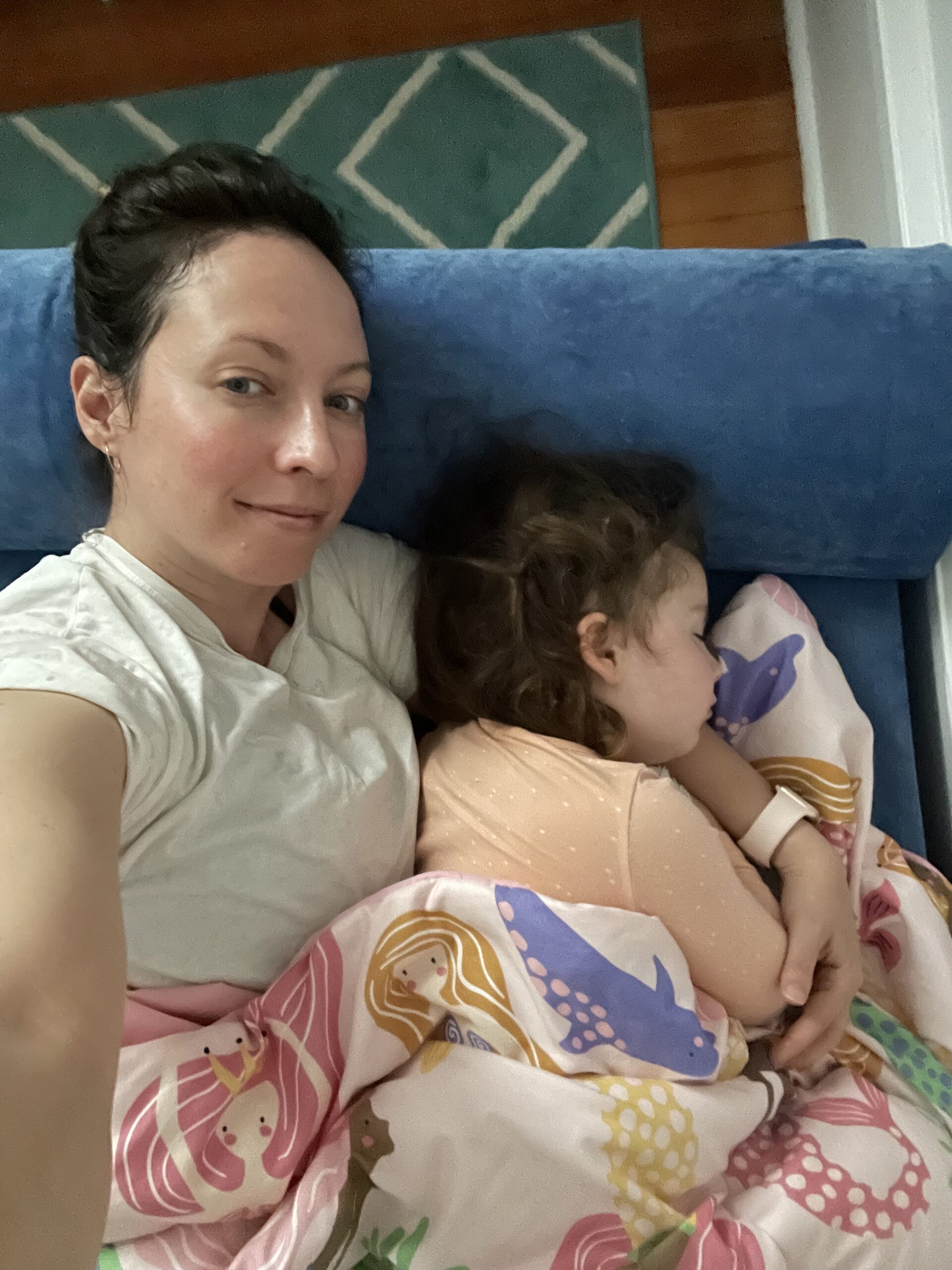
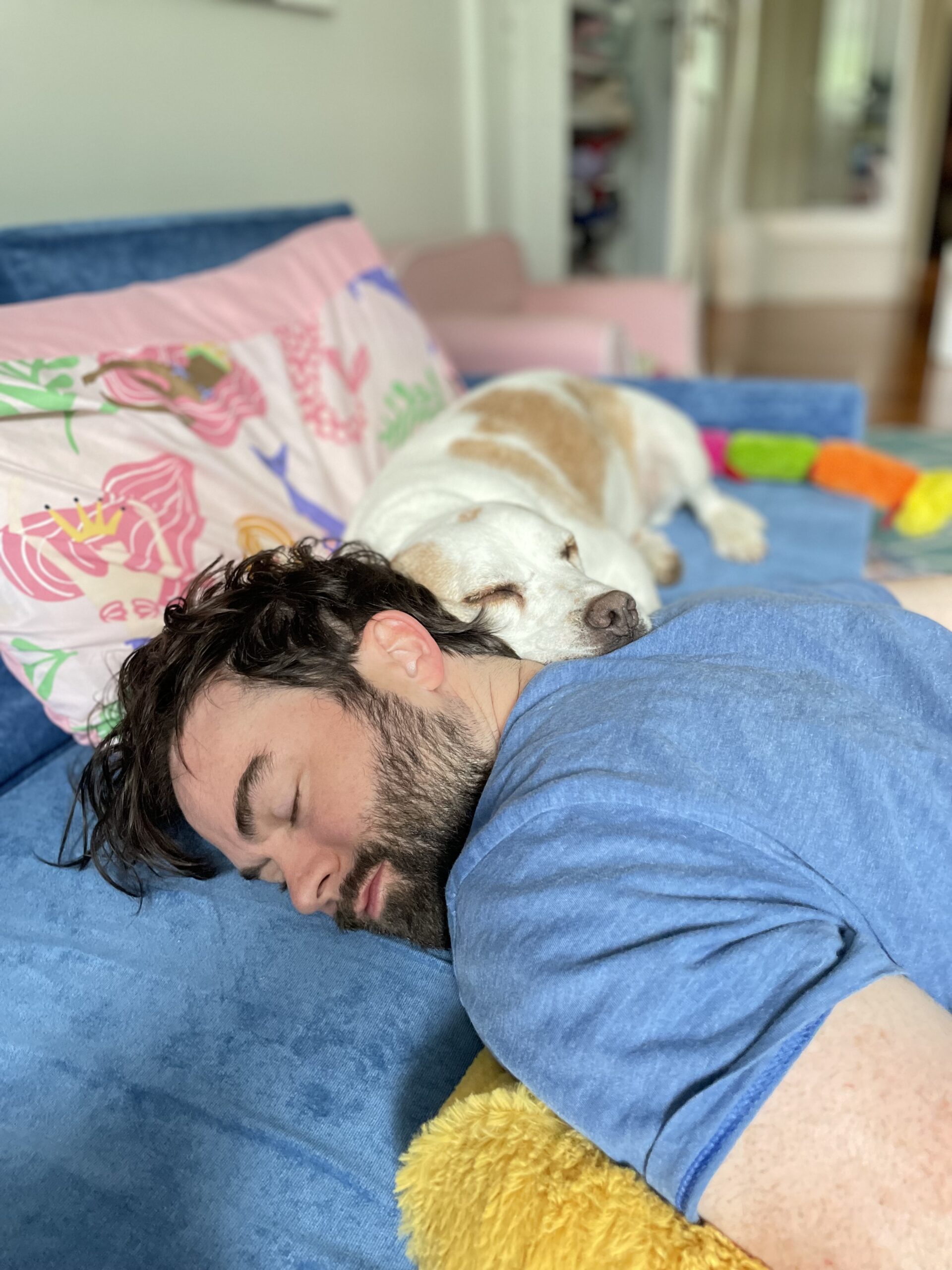
The couch has become a regular and versatile player in our lives. Whether we are using it for family reading time (scrunching up in her toddler bed just wasn’t cutting it anymore!) or creating a castle fort or just using it to tumble around, it is comfortable, sturdy, and looks good in every room. I was worried about the size, but since we use it as a couch most of the time, it’s actually pretty perfect: my husband, daughter, dog, cat, and I can all sit on it together, with the armrests, very comfortably. When my daughter was sick, I was able to use it as a daybed in her room, and we have also napped together on it a few times. I can imagine it being the perfect spot for one of her friends to use for sleepovers well into high school, which makes it truly worth the investment in my book.
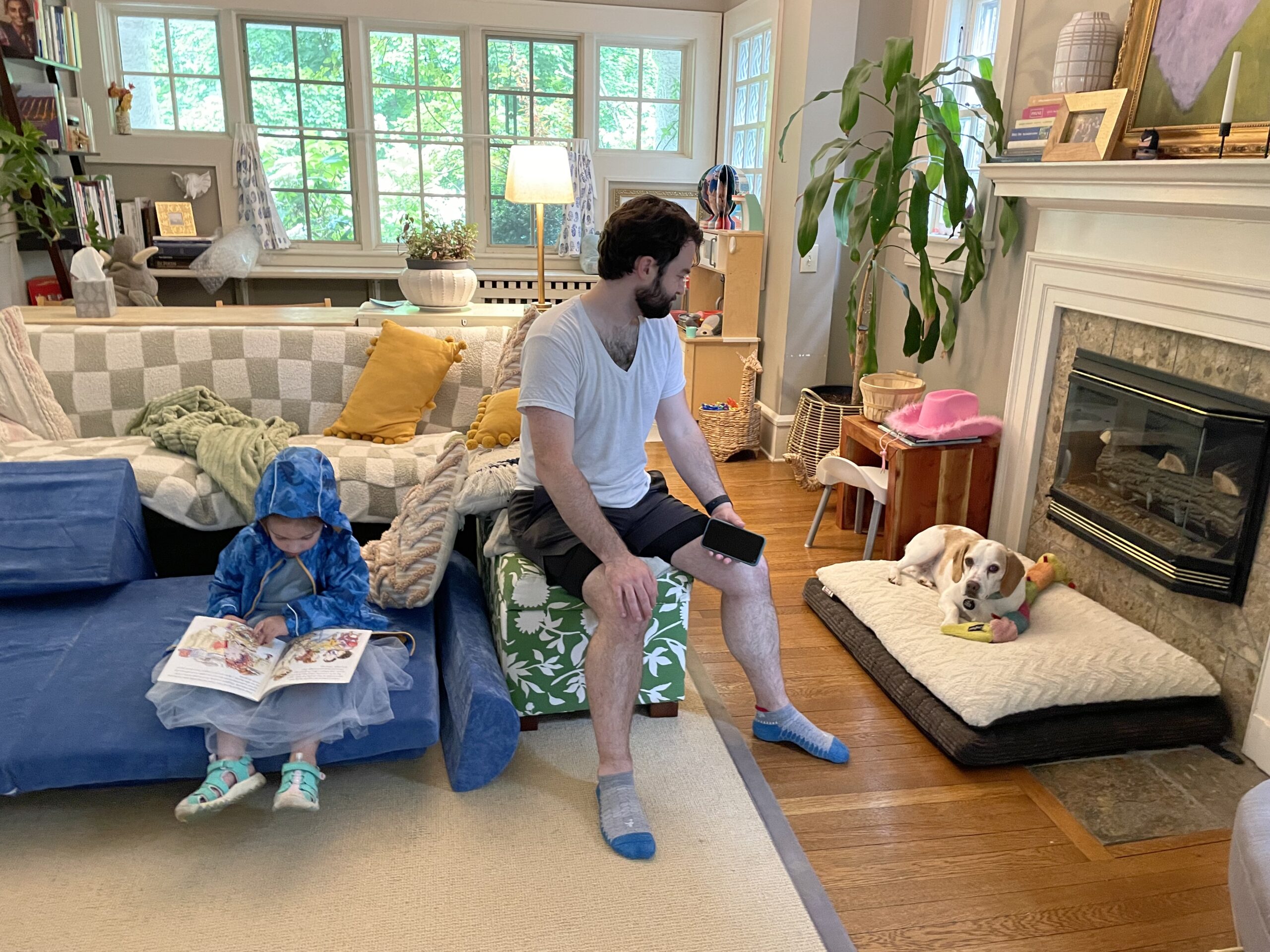
It’s easy to rearrange and assemble, and we have brought it downstairs a few times to make a kind of bed for family movie nights. Even our kid, who’s four years old, has no trouble maneuvering and carrying the firm but light cushions. It has held its shape under weeks of hard use, putting our now pitifully wonky couch cushions—which lasted maybe a week or so under our daughter’s ministrations—to shame.
As someone who is, shall we say, particular about spending top dollar on kids’ items, I fully recommend this play couch for anyone looking for a cute but functional item for many years of kid use. At $349, it’s an investment, for sure! But when you think of all the many uses for sleep and play over the course of an entire childhood, this cost-per-use becomes pretty reasonable. We have even folded up one rectangle base and thrown it in the car for a toddler bed on the go! And I know whenever she’s done with it, our pets will happily make it their own.
If the cost is still giving you pause, consider factoring in the furniture damage you prevent when the kids have a designated couch to rough-and-tumble on. With free shipping, a 30-day trial, and a one-year warranty (and payment options with Affirm!), it’s certainly worth a shot.
THIS STORY IS IN PARTNERSHIP WITH OUR FRIENDS AT BRENTWOOD HOME

Stephanie H. Fallon is a writer originally from Houston, Texas. She has an MFA from the Jackson Center of Creative Writing at Hollins University. She lives with her family in the Blue Ridge Mountains of Virginia, where she writes about motherhood, artmaking, and work culture. You can find her on Instagram or learn more on her website.
